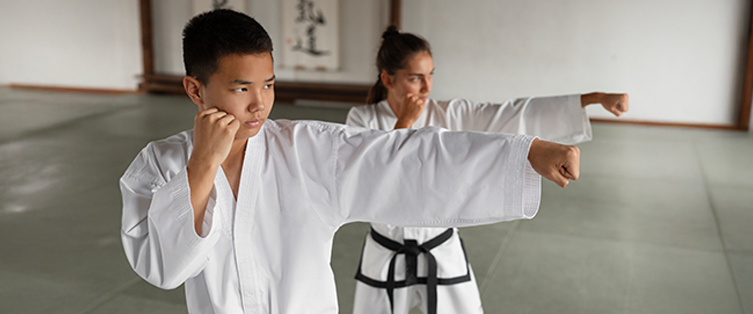Resin is a natural substance most often found in plants and bugs. It has been used for a long time. It was a valuable part of religious ceremonies in Ancient Greece and Egypt. Shellac, balsam, and amber are all examples of resins that come from nature. Plants make this substance, which helps them heal if they get hurt and keeps insects away.
Before synthetic resin came along, commercial molding was done with natural plastics like gutta-percha, lac, and cemented asbestos. In 1909, Leo H. Baekeland was the first person to make synthetic resin. He called it “bakelite,” and it’s thought to be the first resin made from chemicals. This resin could be formed into different shapes and used in different ways. In short, synthetic resin is a thick material that hardens into polymers when it cures (hardening by cross-linking polymer chains).
What Is Resin Art?
Resin is a unique mixture of chemicals that hardens into a stronger material. Depending on the resin you use, you can set it by adding a hardener or exposing it to UV light. The artificial material can be poured into molds to make things or added to a piece of art to protect it from wear. Epoxy, polyurethane, silicone, and polyester “fiberglass” resin are used to make art. Each one works best with a certain kind of medium. Epoxy resin is the best choice for beginners who want to use molds to make jewelry and other things. There are four main things about the resin:
Water-Resistant
Resin is resistant to water. So, people use it to seal and stick things together. People also use it to protect fragile art from damage caused by the weather. It is used to seal anything, from concrete and wood to metal and plastic.
Versatile
Second, resin is a versatile material used to make many different kinds, sizes, and shapes. One type of resin makes trash cans, while another makes jewelry.
Low-Maintenance
Third, resin products don’t need a lot of upkeep. So, any dust or stains can be easily wiped away. In the worst cases, a pressure wash can make the item look as good as new.
Eco Friendly
Some types of resin derive from recycled material, making them suitable for the environment.
How Did Resin Art Get Started?
People have been making resin art for a long time, which is surprising. Nature’s resin, also called amber, is made by trees and turns into a hard, transparent slab when it fossilizes. Amber has been the choice to use for hundreds of years to make jewelry and other decorative items. The modern resin version is made in a lab, but is still used for the same things. In the 1930s, epoxy resin was first found. When people figured out that it could be used to stick things together or keep things safe, they patented it as their product. Soon after, epoxy resin started being used in art, which has stayed ever since.
The Appeal of Resin Art
Resin art is appealing because anyone can do it, even if they can’t draw or paint. This is because it doesn’t require any drawing or painting skills. Resin’s glass-like shine and plastic-like composition make it both attractive and valuable. It can be used for both fluid art and pieces with clear structures. Resin is the chameleon of art supplies because it can be used with many different things.
How Is Resin Used to Make Art?
Resin is a unique mix of chemicals that gets harder as it dries. Depending on your resin, you can either add a hardener or expose it to UV light to make it harder. The artificial substance can be poured into molds to make things or put on art to protect it from wear and tear. Resins like epoxy, polyurethane, silicone, and “fiberglass” polyester are all used to make art. Each works best with a separate type of medium. Epoxy resin is the best choice for beginners who want to use molds to make jewelry and other things.
What Can You Make With Resin?
Resin can be used to create almost anything if you have a mold for it. If you want to make your own jewelry, making pendants, combs, and earrings is easy and fun. If you want to add a personal touch to your home decor, you could use resin to make your coasters, ashtrays, cutting boards, or serving trays. If you don’t want to use molds to keep things, a shiny finish of resin looks great on both tabletop art and canvas art. When you make your resin art, you can make decorations that look expensive but cost much less.
How Do I Get Started With Resin Art?
You’ll need a few things to start: disposable cups, Popsicle sticks, resin and hardener, molds, and a measuring cup. You can add items to your pieces, like dried flowers, dyed resin, and glitter, if you want to. Putting down newspaper and gloves can keep you safe and prevent damage to the table you are working on.
After you have set up your workspace:
- Put the same amount of resin and hardener into the disposable cup.
- Start slowly stirring with the popsicle stick until there are no more air bubbles and all the ingredients are mixed.
- Add the color you want and mix gently before you pour the mixture into your mold.
- Pour the resin carefully into the mold and let it harden overnight in a safe, open place. When the resin has been completely set, you will have made a piece of resin art.
Tips and Tricks for Epoxy Resin Art
Check out these tips and tricks to make working with resin easier to make art!
Resin Art Safety
Safety is very important when working with resin art, whether it’s rock art or epoxy resin. To make your resin art, you use wax and a chemical that causes the resin to harden. When these are mixed, they make fumes that can hurt your lungs. Make resin art only in a room with good airflow.
Use an excellent N95 mask or respirator, especially when sanding your resin art. Use goggles to protect your eyes so that nothing gets in them. Wear nitrite rubber gloves to protect your hands while working with epoxy resin.
No Bubbles
After you pour it, your epoxy resin mix can bubble. These bubbles could get hard on their own and ruin your art. To stop this from happening:
- Use a resin that keeps bubbles from forming by pushing them to the surface, where they will pop
- Get rid of any flaws with a heat gun
- Try to pour the resin as close to the surface as possible to avoid bubbles
Room Temperature
Did you know that heat can speed up the drying of your epoxy resin art? People usually use heat lamps or heaters to speed up the curing time of resin art. Once the resin and the hardener are thoroughly mixed, they can dry quickly in a warm room. Temperatures between 75 and 85 degrees Fahrenheit would be best. Even though humidity makes epoxy resin dry, it can make deep pour resin cloudy. It will take about 72 hours for the resin to fully harden. In a hot, dry place, it might happen faster. If it’s cold, it will only make the curing process take longer.
Getting the Most Out of Your Experience With Resin Art
Resin art is most enjoyable when you learn all you can about the craft and practice. Why not take a class from Pursueit and get an insider’s perspective on making the most beautiful resin art?






Leave a Reply